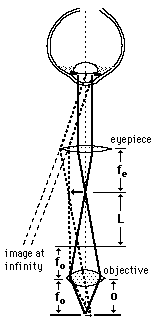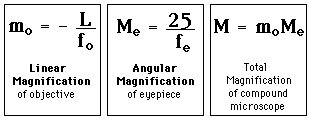 |
Compound MicroscopeA compound microscope uses a very short focal length objective lens to form a greatly enlarged image. This image is then viewed with a short focal length eyepiece used as a simple magnifier. The image should be formed at infinity to minimize eyestrain. The general assumption is that the length of the tube L is large compared to either f(o) or f(e) so that the following relationships hold.  |
| Example |
Lens concepts
Optical instruments
| HyperPhysics***** Light and Vision | R Nave |